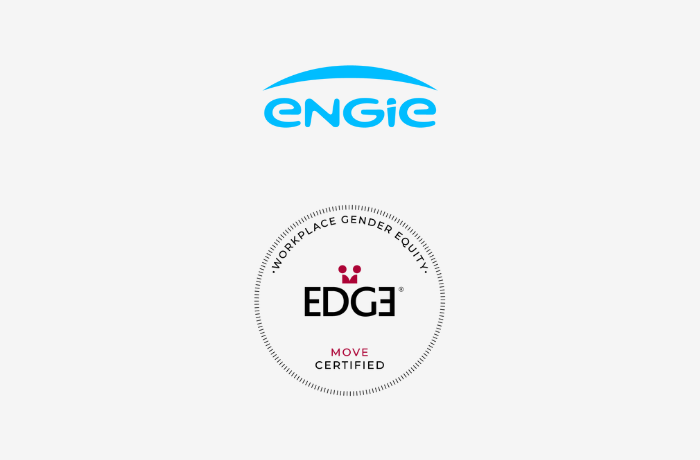EquiNations, our in-depth analysis of diversity, fairness, and inclusion legislative frameworks across the 20 countries with the highest number of EDGE Certified organizations, is once again up to date. While this bi-annual review did not reveal major legislative shifts, several indicator ratings have been adjusted—including “Childcare costs (% of average wage, couple),” “% of women in the paid workforce,” and “% employment rate for the 55–64 age bracket”—reflecting evolving socioeconomic dynamics. This update spotlights the evolving landscape of older worker employment, focusing on global trends, policy reforms aimed at extending working lives, and the imperative for age-inclusive workplace initiatives.
EquiNations
Explore DE&I regulations in 20 countries
Select a country from the dropdown menu to highlight our findings and read a summary of the standout metrics.
You can view the legend for each category by hovering or touching over a circle.

Our analysis covers the 20 countries with the highest number of current EDGE Certifications

Focus for this edition: An ageing workforce
Global Trends in 55-64 Age Bracket Worker Employment
Understanding employment rates for the 55-64 age bracket is crucial in the context of diversity, fairness, and inclusion. Workforce demographics are shifting which not only reflects societal changes but also presents both challenges and opportunities for organizations worldwide.
Recent years have witnessed an upward trend in employment rates for older workers across developed economies. In Europe, the employment rate for workers aged 55-64 has been steadily increasing over the past decade and reached a record high of 65.30% in December 2024, underscoring the growing importance of this demographic in the labour market [1]. This trend is corroborated by OECD data, which shows that the average participation rate for 55-64 year-olds has risen by 8 percentage points over the past decade [2].
Gender Disparities in 55-64 Age Bracket Worker Employment
There are significant gender gaps in employment rates for older workers. Across the OECD, the average gender gap stood at 18 percentage points in 2018 for 55-64 year-olds, down by only 3 percentage points from 2008 levels [2].
The reasons behind this disparity are multifaceted. Older women often face additional challenges compared to men, including:
- Greater caregiving responsibilities for grandchildren and elderly family members, which can limit their availability for full-time employment [3][4].
- Lower pension ages for women in many countries, implicitly signalling that older women are less valued in the labour market [4].
- Inflexible work arrangements, such as long working hours, which may deter older individuals from extending their careers and hinder women returning from child-rearing breaks from pursuing longer work trajectories [2].
- The compounded effects of age and gender discrimination, creating additional barriers to employment and career advancement [5][6].
Employment Policies for Ageing Societies
Despite increasing life expectancy, the effective retirement age in many countries remains lower than it was 30 years ago, underscoring a growing disconnect between demographic realities and workforce policies [2]. This gap is evident in our research, which shows that half of the 20 EquiNations countries currently have a retirement age under 64 years old, either for the entire population or specific segments. Some nations have recently implemented reforms aimed at encouraging longer working lives and ensuring the financial sustainability of pension systems, these include:
- China announced a gradual increase in retirement ages, the first such change since the 1950s. For men, the retirement age will rise from 60 to 63, while for women, it will increase from 50/55 to 55/58, depending on their occupation [7].
- Brazil is transitioning retirement ages under its 2024 social security reform, moving to 65 by 2027 for men and 62 by 2031 for women [8].
- France raised its state pension age from 62 to 64 in 2023 [9].
- Switzerland is aligning women’s retirement age with men’s by gradually increasing it from 64 to 65 between 2025 and 2028 [10].
While these reforms represent important steps toward addressing demographic shifts, simply raising the retirement age is not a comprehensive solution. Such measures can be highly politicized and risk exacerbating inequalities if implemented without broader structural changes [11]. To better respond to the issue of ageing populations, countries must adopt holistic approaches that go beyond raising retirement ages. This includes strengthening labour supply through inclusive employment practices, sustaining employability across all career stages, and fostering workplace environments that retain and hire workers over 55 [2].
Embracing Age Diversity
As the global workforce continues to age, organizations must proactively address age diversity within their diversity, fairness, and inclusion frameworks. The rising tide of older worker employment presents an opportunity to tap into a wealth of experience and skills [11][12]. However, it also requires a commitment to ongoing monitoring and action to improve employment rates and conditions for older workers, particularly women.
The EDGEplus methodology, which focuses on gender and intersectionality, provides a valuable framework for understanding and addressing age-related employment issues across genders. By recognizing age as a critical dimension of diversity, organizations can develop more nuanced and effective policies and practices and tailored employee experiences to support older workers. By embracing age diversity and implementing supportive policies, organizations can create more inclusive workplaces, enhancing organizational performance and contributing to a more fair and sustainable labour market for all age groups.
References
[2] https://www.oecd.org/en/publications/working-better-with-age_c4d4f66a-en.html
[5] https://hbr.org/2023/06/women-in-leadership-face-ageism-at-every-age
[6] https://www.womenofinfluence.ca/2024/02/26/ageism-in-the-workplace/
[8] https://cworldwide.com/media/c04hnzjf/brazilian_pension_reform.pdf
[9] https://www.bbc.com/news/world-europe-65279818
[11] https://www.weforum.org/stories/2024/09/ageing-workforce-challenges-solutions/
[12] https://www.edge-cert.org/article/navigating-intergenerational-collaboration/



